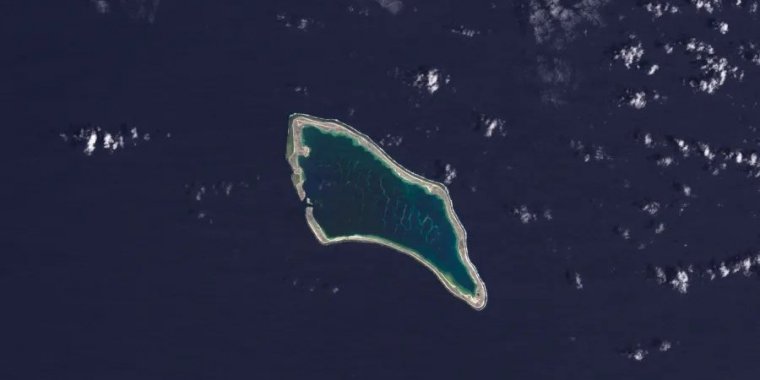| World |
Irreversible Sea Level Rise for Pacific Islands
In the next 30 years, Pacific Island nations such as Tuvalu, Kiribati, and Fiji will experience at least 8 inches (15 centimeters) of sea level rise, according to an analysis by NASA’s sea level change science team. This amount of rise will occur regardless of whether greenhouse gas emissions change in the coming years.

Pacific Island nations such as Kiribati — a low-lying country in the southern Pacific Ocean — are preparing now for a future of higher sea levels. Photo: NASA Earth Observatory
The sea level change team undertook the analysis of this region at the request of several Pacific Island nations, including Tuvalu and Kiribati, and in close coordination with the U.S. Department of State.
In addition to the overall analysis, the agency’s sea level team produced high-resolution maps showing which areas of different Pacific Island nations will be vulnerable to high-tide flooding — otherwise known as nuisance flooding or sunny day flooding — by the 2050s.
Released on Sept. 23, the maps outline flooding potential in a range of emissions scenarios, from best-case to business-as-usual to worst-case.
“Sea level will continue to rise for centuries, causing more frequent flooding,” said Nadya Vinogradova Shiffer, who directs ocean physics programs for NASA’s Earth Science Division. “NASA’s new flood tool tells you what the potential increase in flooding frequency and severity look like in the next decades for the coastal communities of the Pacific Island nations.”
Team members, led by researchers at the University of Hawaii and in collaboration with scientists at the University of Colorado and Virginia Tech, started with flood maps of Kiribati, Tuvalu, Fiji, Nauru, and Niue.
They plan to build high-resolution maps for other Pacific Island nations in the near future. The maps can assist Pacific Island nations in deciding where to focus mitigation efforts.
“Science and data can help the community of Tuvalu in relaying accurate sea level rise projections,” said Grace Malie, a youth leader from Tuvalu who is involved with the Rising Nations Initiative, a United Nations-supported program led by Pacific Island nations to help preserve their statehood and protect the rights and heritage of populations affected by climate change. “This will also help with early warning systems, which is something that our country is focusing on at the moment.”
The analysis by the sea level change team also found that the number of high-tide flooding days in an average year will increase by an order of magnitude for nearly all Pacific Island nations by the 2050s.
Areas of Tuvalu that currently see less than five high-tide flood days a year could average 25 flood days annually by the 2050s. Regions of Kiribati that see fewer than five flood days a year today will experience an average of 65 flood days annually by the 2050s.
“I am living the reality of climate change,” said Malie. “Everyone (in Tuvalu) lives by the coast or along the coastline, so everyone gets heavily affected by this.”
Flooding on island nations can come from the ocean inundating land during storms or during exceptionally high tides, called king tides. But it can also result when saltwater intrudes into underground areas and pushes the water table to the surface.
“There are points on the island where we will see seawater bubbling from beneath the surface and heavily flooding the area,” Malie added.
Sea level rise doesn’t occur uniformly around the world. A combination of global and local conditions, such as the topography of a coastline and how glacial meltwater is distributed in the ocean, affects the amount of rise a particular region will experience.
“We’re always focused on the differences in sea level rise from one region to another, but in the Pacific, the numbers are surprisingly consistent,” said Ben Hamlington, a sea level researcher at NASA’s Jet Propulsion Laboratory in Southern California and the agency’s sea level change science team lead.
The impacts of 8 inches (15 centimeters) of sea level rise will vary from country to country. For instance, some nations could experience nuisance flooding several times a year at their airport, while others might face frequent neighborhood flooding equivalent to being inundated for nearly half the year.
YOU MAY ALSO LIKE





